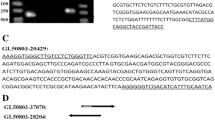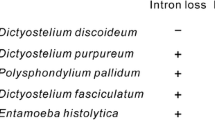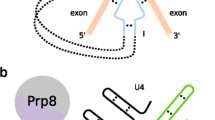Abstract
What caused spliceosomal introns gain remains an unsolved problem. To this, defining what spliceosomal introns arise from is critical. Here, the introns density of the genomes is calculated for four species, indicating:(1) sex chromosomes in mammals have lower intron densities, (2) despite that, the proportion of UTRs (untranslated regions) with introns in sex chromosomes is higher than other ones, and (3) AT content of introns is more similar to that of intergenic regions when these regions comprise the majority of a chromosome, and more similar to that of exons, when exons are the majority of the chromosome. On the other hand, introns have been clearly demonstrated to invade genetic sequences in recent times while sex chromosomes evolved from a pair of autosomes within the last 300 millions years. One main difference between sex chromosomes and autosomes in mammalian is that sex chromosomes recombination stopped. Thus, recombination might be the main determinant for eukaryotes gaining spliceosomal introns. To further prove that and avoid giving weak signal, the whole genomes from eight eukaryotic species are analyzed and present strong signal for above the trend (3) in three species (t-test, P = 0.55 for C. elegans, P = 0.72 for D. melanogaster and P = 0.83 for A. thaliana). These results suggest that the genome-wide coincidence as above (3) can only be caused by the large-scale random unequal crossover in eukaryote meiosis, which might have fueled spliceosomal introns but hardly occurred in prokaryotes.




Similar content being viewed by others
References
Logsdon JM (1998) The recent origins of spliceosomal introns revisited. Curr Opin Genet Dev 8:637–648. doi:10.1016/S0959-437X(98)80031-2
Nguyen HD, Yoshihama M, Kenmochi N (2006) Phase distribution of spliceosomal introns: implications for intron origin. BMC Evol Biol 6:69. doi:10.1186/1471-2148-6-69
Pessa HK, Ruokolainen A, Frilander MJ (2006) The abundance of the spliceosomal snRNPs is not limiting the splicing of U12-type introns. RNA (New York, NY) 12:1883–1892. doi:10.1261/rna.213906
Rodriguez-Trelles F, Tarrio R, Ayala FJ (2006) Origins and evolution of spliceosomal introns. Annu Rev Genet 40:47–76. doi:10.1146/annurev.genet.40.110405.090625
Roy SW, Gilbert W (2006) The evolution of spliceosomal introns: patterns, puzzles and progress. Nat Rev 7:211–221. doi:10.1146/annurev.genet.40.110405.090625
Murakami H, Keeney S (2008) Regulating the formation of DNA double-strand breaks in meiosis. Genes Dev 22:286–292. doi:10.1101/gad.1642308
Burgoyne PS, Mahadevaiah SK, Turner JM (2007) The management of DNA double-strand breaks in mitotic G2, and in mammalian meiosis viewed from a mitotic G2 perspective. Bioessays 29:974–986. doi:10.1002/bies.20639
Viera A, Santos JL, Page J et al (2004) DNA double-strand breaks, recombination and synapsis: the timing of meiosis differs in grasshoppers and flies. EMBO Rep 5:385–391. doi:10.1038/sj.embor.7400112
Duret L (2001) Why do genes have introns? Recombination might add a new piece to the puzzle. Trends Genet 17:172–175. doi:10.1016/S0168-9525(01)02236-3
Crick F (1971) General model for the chromosomes of higher organisms. Nature 234:25–27. doi:10.1038/234025a0
Forsdyke DR (1995) A stem-loop “kissing” model for the initiation of recombination and the origin of introns. Mol Biol Evol 12:949–958
Hartung F, Blattner FR, Puchta H (2002) Intron gain and loss in the evolution of the conserved eukaryotic recombination machinery. Nucleic Acids Res 30:5175–5181
Lahn BT, Page DC (1999) Four evolutionary strata on the human X chromosome. Science 286:964–967. doi:10.1126/science.286.5441.964
Shepelev V, Fedorov A (2006) Advances in the exon-intron database (EID). Brief Bioinform 7:178–185. doi:10.1093/bib/bbl003
Sakharkar MK, Kangueane P, Petrov DA et al (2002) SEGE: a database on ‘intron less/single exonic’ genes from eukaryotes. Bioinformatics (Oxford, England) 18:1266–1267. doi:10.1093/bioinformatics/18.9.1266
Cannone JJ, Subramanian S, Schnare MN et al (2002) The comparative RNA web (CRW) site: an online database of comparative sequence and structure information for ribosomal, intron, and other RNAs. BMC Bioinform 3:2. doi:10.1186/1471-2105-3-2
McVean GA, Myers SR, Hunt S et al (2004) The fine-scale structure of recombination rate variation in the human genome. Science (New York, NY) 304:581–584. doi:10.1126/science.1092500
Frankham R, Briscoe DA, Nurthen RK (1980) Unequal crossing over at the rRNA tandon as a source of quantitative genetic variation in drosophila. Genetics 95:727–742
Frankham R, Briscoe DA, Nurthen RK (1978) Unequal crossing over at the rRNA locus as a source of quantitative genetic variation. Nature 272:80–81. doi:10.1038/272080a0
Michel F, Ferat JL (1995) Structure and activities of group II introns. Annu Rev Biochem 64:435–461
Begun A (2008) Power estimation of the t test for detecting differential gene expression. Funct Integr Genomics 8:109–113. doi:10.1007/s10142-007-0061-8
Schaffner SF (2004) The X chromosome in population genetics. Nat Rev Genet 5:43–51. doi:10.1038/nrg1247
Baker BS, Belote JM (1983) Sex determination and dosage compensation in drosophila melanogaster. Annu Rev Genet 17:345–393
Kelly WG, Schaner CE, Dernburg AF et al (2002) X-chromosome silencing in the germline of C. elegans. Development 129:479–492
Ward MA, Ward WS (2004) A model for the function of sperm DNA degradation. Reprod Fertil Dev 16:547–554
Omura M, Nishikawa T (2006) Glucocorticoid remediable aldosteronism. Nippon rinsho Suppl 1:628–634
Steen VM, Molven A, Aarskog NK et al (1995) Homologous unequal cross-over involving a 2.8 kb direct repeat as a mechanism for the generation of allelic variants of the human cytochrome P450 CYP2D6 gene, vol 4. Oxford Univ Press, Oxford, pp 2251–2257
Sakharkar MK, Chow VT, Kangueane P (2004) Distributions of exons and introns in the human genome. In Silico Biol 4:387–393
Qiu WG, Schisler N, Stoltzfus A (2004) The evolutionary gain of spliceosomal introns: sequence and phase preferences. Mol Biol Evol 21:1252–1263. doi:10.1093/molbev/msh120
Zhao S, Shetty J, Hou L et al (2004) Human, mouse, and rat genome large-scale rearrangements: stability versus speciation. Genome Res 14:1851–1860. doi:10.1101/gr.2663304
Hu K (2006) Intron exclusion and the mystery of intron loss. FEBS Lett 580:6361–6365. doi:10.1016/j.febslet.2006.10.048
Logsdon JM (1998) The recent origins of spliceosomal introns revisited. Curr Opin Genet Dev 8:637–648. doi:10.1016/S0959-437X(98)80031-2
Cavalier-Smith T (1991) Intron phylogeny: a new hypothesis. Trends Genet 7:145–148
Lane CE, van den Heuvel K, Kozera C et al (2007) Nucleomorph genome of Hemiselmis andersenii reveals complete intron loss and compaction as a driver of protein structure and function. Proc Natl Acad Sci USA 104:19908–19913. doi:10.1073/pnas.0707419104
Panton LJ, Tesh RB, Nadeau KC et al (1991) A test for genetic exchange in mixed infections of Leishmania major in the sand fly Phlebotomus papatasi. J Protozool 38:224–228
Zuckerman SH, Solus JF, Gillespie FP et al (1984) Retention of both parental mitochondrial-DNA species in mouse Chinese-hamster somatic-cell hybrids. Somat Cell Mol Genet 10:85–92
Hayashi JI, Tagashira Y, Yoshida MC (1985) Absence of extensive recombination between interspecies and intraspecies mitochondrial-DNA in mammalian-cells. Exp Cell Res 160:387–395
King MP, Attardi G (1988) Injection of mitochondria into human-cells leads to a rapid replacement of the endogenous mitochondrial-DNA. Cell 52:811–819
Niu DK (2008) Exon definition as a potential negative force against intron losses in evolution. Biol Direct 3:46. doi:10.1186/1745-6150-3-46
Acknowledgments
We acknowledge the supports from the National 973 Project China No. 2007CB707802. Some data were supplied by Bingbing Wang and Vicki L. Chandler from Iowa State University, Department of Genetics, Development and Cell Biology.
Author information
Authors and Affiliations
Corresponding author
Electronic supplementary material
Below is the link to the electronic supplementary material.
Rights and permissions
About this article
Cite this article
Tan, H. Genome-wide analysis of recombination machinery for spliceosomal introns gain. Mol Biol Rep 37, 1551–1557 (2010). https://doi.org/10.1007/s11033-009-9557-8
Received:
Accepted:
Published:
Issue Date:
DOI: https://doi.org/10.1007/s11033-009-9557-8




